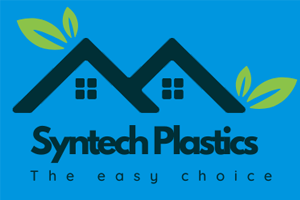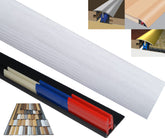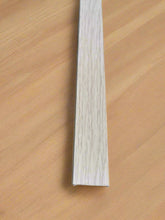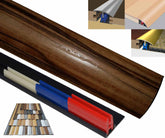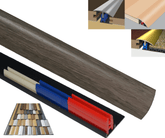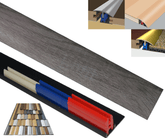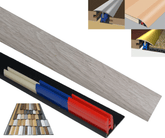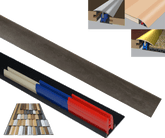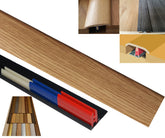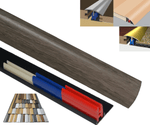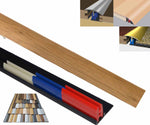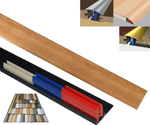Best flooring options 2025 for kitchens and baths: moisture-smart picks that last
Introduction
In 2025, homeowners and designers are choosing floors that balance cost, durability, and authentic aesthetics, with laminate, LVP, and engineered wood leading the charge for easy installation and repeatable designs. This guide dives into how these materials, paired with wide-plank formats, low-gloss textures, and light neutrals like warm oak, greige, and beige, shape modern interiors while aligning with radiant and underfloor heating trends, sustainability concerns, and real-world renovation needs. You’ll find practical guidance, data-informed insights, and industry best practices to help you pick flooring that feels fresh, performs reliably, and remains valuable over time.
Laminate, LVP, and engineered wood dominate the 2025 flooring options with easy installation and repeatable designs.
Laminate, LVP, and engineered wood now dominate hard-surface flooring selections in many markets, delivering cost efficiency, easy installation, and broad design repetition. In practice, homeowners and developers alike appreciate the quick turnaround of these products, which enable cohesive looks across living spaces, kitchens, and baths without the higher cost or longer timelines of solid hardwood. The repeatable designs also simplify purchasing decisions, as you can achieve a consistent grain, color, and texture across rooms, reducing visual fragmentation in open-plan layouts.
Two leading trends continue to drive adoption: the shift toward wide planks and low-gloss finishes that mimic natural materials, and the growing emphasis on durability under real-world conditions. For residential spaces and small renovations, wide planks create an expansive feel, while low-gloss textures soften reflections and reduce the appearance of wear. Practical realities—such as moisture exposure, cleaning ease, and seasonal expansion—are increasingly encoded into product specifications, ensuring long-term performance in diverse climates and household routines.
"Insert quote exactly as given here."
Wide planks, low-gloss textures, and light neutrals—how modern flooring ideas shape 2025 interiors.
Modern aesthetics favor wide planks and low-gloss textures that mimic natural materials, with light neutrals like warm oak, greige, and beige driving the trend. This palette and format support bright, airy rooms and visually expand compact spaces, which is especially valuable in modern interiors that blend living and dining areas or incorporate open-plan layouts. These choices also pair well with a broad range of furniture—from mid-century silhouettes to contemporary, minimalist lines—keeping interiors cohesive and timeless.
Laminate and LVP offer design repetition and easy installation, supporting flexible layouts in small spaces. The practical advantage is clear: you can reproduce the same grain pattern across multiple rooms without paying premium for bespoke finishes. For renovators and new-builds alike, this means less decision fatigue and faster project timelines, making these materials a go-to for achieving high-end looks at accessible costs. In real-world projects, flexible layouts and repeatable designs translate into smoother transitions between zones, easier matching of accessories, and less waste in material ordering.
"Insert quote exactly as given here."
Popular living-room colours and neutral finishes—warm neutrals and soft woods—are complemented by durable underlays that improve acoustics for open-plan rooms. By pairing light neutrals with well-chosen underlays, you can soften echoing spaces, preserve conversation clarity, and maintain comfortable acoustics even in large, combined areas. Durable underlays also help with walking comfort underfoot, which is especially important in rooms with high foot traffic or multifunctional use.
- Highlighting features or statistics:
- Wide planks (7–9 inches) dominate new laminate and LVP lines, aligning with designer aesthetics and efficient installation.
-
Low-gloss textures trend toward 5–10% sheen, reducing glare while preserving a natural timber look.
-
Detailing step-by-step instructions:
- Step 1: Measure and plan for expansion gaps at walls and fixed features.
-
Step 2: Select a compatible underlayment that provides both sound control and moisture management for the chosen product.
-
Pros/cons or tips:
- Pros: Rapid installation, scalable looks across spaces, simple replacement if damaged.
- Cons: Surface wear can be more visible on high-traffic areas if color and texture are too light.
Underfloor heating-ready flooring and radiant-floor-compatible options rise in 2025 for comfort and energy savings.
Energy efficiency hinges on floor-covering compatibility, insulation, and system type, with electric vs hydronic heating affecting performance and comfort. In radiant-floor projects, choosing underfloor heating-compatible flooring is essential to maintain temperature uniformity and minimize energy use. Laminates and LVP frequently require specific temperature ratings and spectral limitations to avoid warping or plume effects, while engineered wood can offer stability but needs careful evaluation of core construction and wear layer.
Substrate preparation and moisture barriers are critical to prevent issues with radiant heat, and they tie closely to warranty coverage. The foundation matters: if the substrate isn’t flat, dry, and adequately insulated, radiant heat can exacerbate imperfections, leading to noise, flex, or delamination. A properly prepared base reduces warranty disputes and improves system efficiency by minimizing heat loss through cracks or moisture-driven edge swell. The installation method—electric or hydronic—also affects decisions about finish materials and their tolerance to heat cycles, so be sure to review manufacturer guidelines and regional building codes.
Underlays that boost acoustics and thermal performance are increasingly important in radiant-floor projects, especially in multi-family layouts. Acoustic underlays reduce impact noise between floors and improve comfort in open-plan interiors, while thermal-engineered underlays enhance heat transfer and reduce energy consumption. In multi-family buildings, these considerations are amplified by dense layouts, shared walls, and the need for sound privacy between units, making a thoughtful combination of underlayment and floor covering a key factor in occupant satisfaction and system efficiency.
- Bullet highlighting features or statistics:
- Electric systems typically require thinner, more precise underlayments with restricted temperature ranges to prevent overheating of laminate or LVP surfaces.
-
Hydronic systems can tolerate a broader range of flooring materials, but moisture barriers remain essential to avoid moisture-related failures.
-
Bullet step-by-step instructions:
- Step 1: Verify the radiant system’s heat output and maximum surface temperature with the flooring manufacturer.
-
Step 2: Install an insulation layer beneath the underlayment to minimize heat loss and improve system response times.
-
Bullet tips or pros/cons:
- Pros: Enhanced comfort, consistent room temperatures, potential energy savings.
- Cons: Requires precise installation, possible warranty caveats for certain hybrids and multi-layer products.
Laminate trends 2025: water resistance, authentic textures, reduced formaldehyde, and hybrids.
Laminate trends prioritize water resistance, authentic textures, and lower formaldehyde emissions, addressing labeling and sustainability concerns. With increasingly transparent labeling and independent certifications, shoppers can identify products that keep formaldehyde emissions low while delivering convincing wood-like visuals. Consumers now expect performance that resists spills, humidity changes, and daily wear without compromising aesthetic integrity.
Hybrid and multi-layer laminates blur traditional categories and raise considerations for moisture barriers and warranty terms. The design vocabulary expands beyond classic top veneers to include hybrid cores and moisture-control layers, which can complicate warranty coverage and compatibility with radiant-heating systems. When evaluating these products, buyers should pay close attention to installation instructions, substrate preparation, and the specific conditions under which the product excels, particularly in kitchens and baths where moisture exposure is higher.
Larger plank formats and light neutrals—warm woods and greige—continue to trend, with designs favoring low-gloss finishes that mimic natural materials. Large-scale planks visually elongate spaces, particularly in smaller rooms, while warm oak and greige palettes reflect contemporary sensibilities and can pair with a broad spectrum of furnishings. The overall effect remains practical and elegant: a durable, modern surface that’s easier to maintain and repeat across a home.
"Insert quote exactly as given here."
- Underlayments and related considerations:
-
Note the rising importance of underlays that improve acoustics and thermal performance for radiant heat and multi-family layouts.
-
Example to illustrate modern application:
- In a renovated condo, designers used wide-plank LVP with a low-gloss finish and a cork-based underlayment to reduce footfall noise and improve thermal comfort.
FAQ
- What are the top flooring options to consider in 2025?
- Laminate, LVP, and engineered wood lead the market due to cost efficiency and repeatable designs; choose based on moisture exposure, climate, and whether radiant heat is part of the plan.
- Are laminates safe with regards to formaldehyde emissions?
- Yes—select products with formaldehyde-emission certifications (such as CARB Phase 2 or FloorScore) and transparent labeling to avoid low-cost options without verification.
- Can radiant floor heating work with laminate or LVP?
- Yes, but only with compatible products and proper installation, including appropriate insulation and underlayment.
- Which popular colors are best for living rooms in 2025?
- Warm oak, greige, and beige neutrals are trending, offering versatility and light-reflective properties that suit a wide range of decors.
Conclusion
The 2025 flooring landscape centers on laminate, LVP, and engineered wood as the most practical, repeatable choices that deliver value without sacrificing style, while underfloor heating compatibility and advanced underlays enhance comfort and energy efficiency. By prioritizing wide planks, light neutrals, and authentic textures, you can design interiors that feel spacious, modern, and effortless to maintain. If you’re planning a renovation or new-build, start with a clear moisture and heating plan, request certified product documentation, and partner with a trusted flooring professional to ensure your selection achieves the best balance of price, aesthetics, and long-term performance. Explore samples, compare warranties, and map your room-by-room needs to the best flooring options 2025 have to offer.
